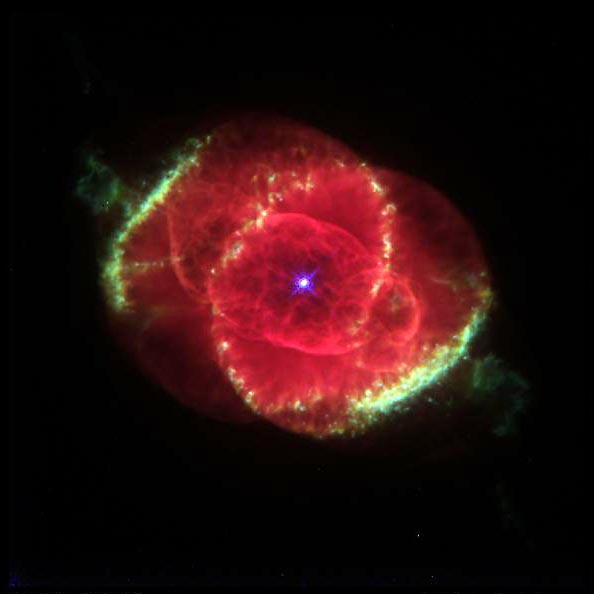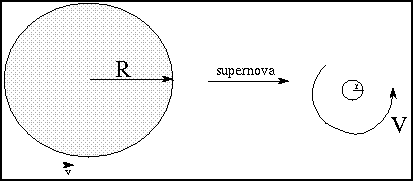Angular Momentum in Stars

http://superstringtheory.com/forum/stringboard/messages25/141.html
Sometimes when dealing with mathematical descriptions of specific phenomenon concerning stars the complexity may become intense. However, we will explore common occurrences and changes of stars that can be described by simple mathematical relationships.
One primary occurrence between stars that are approaching their later stages is a reduction in their radius. This occurs when elements such as hydrogen and helium in the center of the star change into gaseous iron from electron exchanges and other processes. Eventually the star becomes very dense and the radius of the star is reduced. By the conservation of angular momentum in this case, the velocity must increase due to the decreased radius (Kippenhahn, 194-95). Lets do a calculation to show this.
http://www.star.ucl.ac.uk/~idh/STROBEL/angmom/angmom.htm
By the conservation of angular momentum we get this equation: Ii wi = If wf, where "Ii" is the initial moment of inertia, "wi" is the initial angular speed, and "If" and "wf" are the final products of what I just listed. The moment of inertia of a sphere is (2/5)mR^2, where "m" is the mass and "R" is the radius. Plugging these into the equation Ii wi = If wf, we get, (2/5)mRi^2 wi = (2/5)mRf^2 wf. For example our sun rotates on its axis once every 25 days. If our sun were to collapse on itself to a radius of one-tenth of its original radius we could calculate the new time of rotation.
(2/5)mRi^2 wi = (2/5)m(Ri/10)^2 wf
Reducing this equation and solving for "wf" we find: wf = 100wi. The rotational speed of the sun now rotates 100 times faster with its reduced radius. At this speed the sun will rotate on its axis every 6 hours!
